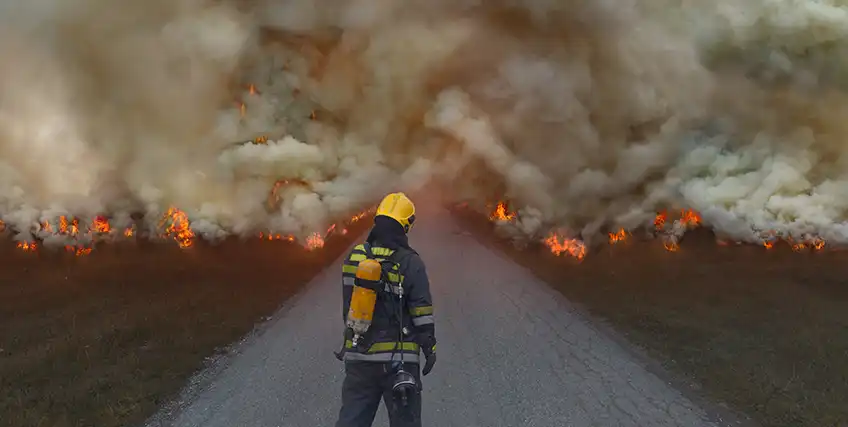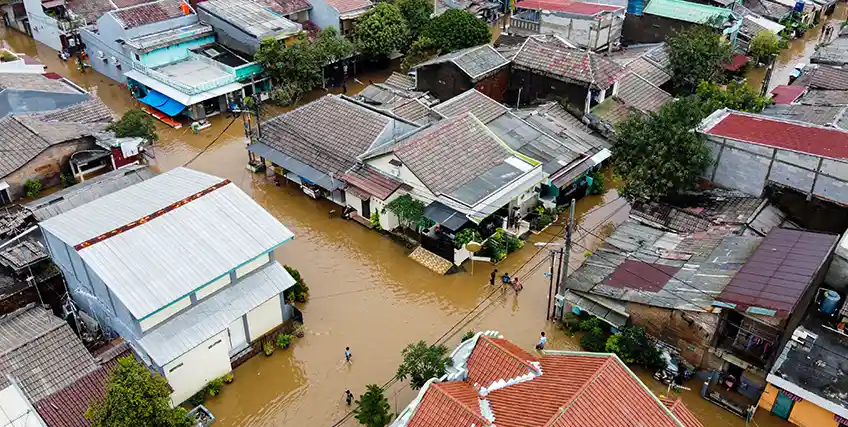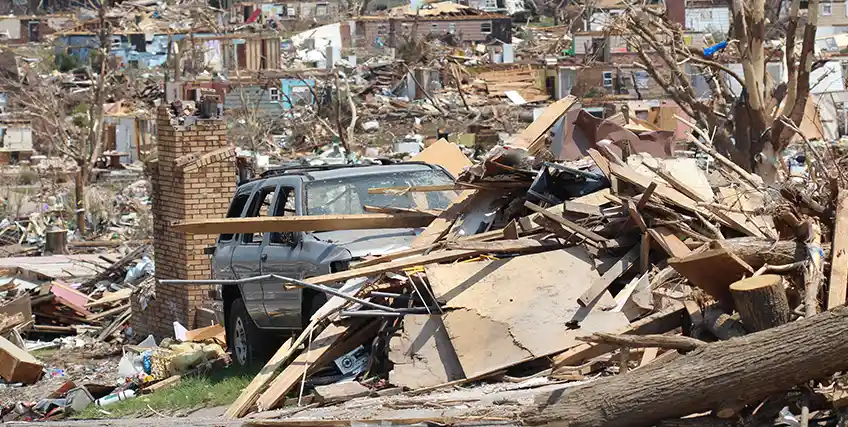Small Business Disaster Loans
To Help You Rebuild, Recover, and Rise.
Every disaster brings uncertainty but for small business owners, it can be financially devastating. Whether it’s a hurricane, pandemic, or wildfire, having access to a disaster loan can help you stay afloat. These loans are backed by the Small Business Administration (SBA) and other federal bodies and are designed to assist with physical damage, working capital, and operating expenses.
Without fast access to funding, businesses can lose valuable time, customers, and inventory. That’s where emergency business loans and targeted disaster assistance programs step in. The goal is to help small business owners resume normal operations as soon as possible, while avoiding high-interest commercial debt or delayed insurance payouts.
From eligibility to the application process, loan terms, and what comes after, this page walks you through everything you need to know. Whether you're a for-profit company, nonprofit organization, or independent contractor, you’ll find tailored support here.
What is a Disaster Loan?
A disaster loan is a type of low-interest financing provided by the U.S. Small Business Administration to businesses, nonprofit organizations, homeowners, and renters affected by a declared disaster area. These loans help with disaster-damaged property, cash flow disruption, or both. They provide financial assistance when insurance coverage or other funding falls short.
SBA disaster assistance includes:
- Business Physical Disaster Loans: For repair/replacement of real estate, equipment, inventory.
- Economic Injury Disaster Loans (EIDL): For working capital if your business can’t operate due to a disaster.
- Home and Personal Property Loans: For homeowners and renters with disaster-damaged homes or belongings.
- Military Reservist Loans: For businesses suffering due to essential employees being called to duty.
These loans can cover expenses insurance doesn’t and often offer more favorable interest rates and loan terms than traditional credit. If you’re seeking a small business emergency loan program, the SBA offers multiple federally backed options that ensure recovery is within reach.
Who Is Eligible?
Eligibility depends on the type of disaster loan and your location. Your business must be in a declared disaster area and must show financial loss due to the disaster. Businesses of all sizes, most nonprofit organizations, homeowners, and renters may apply. For economic disaster loan options like EIDL, the business must demonstrate it cannot meet operating expenses.
You’ll also need to meet certain Small Business Administration criteria, including a credit check and the ability to repay the loan amount. The SBA may request collateral for larger amounts but often waives it for smaller sums. If you're a nonprofit, your use of funds will also be reviewed to ensure it aligns with community relief needs.
Types of Business Disaster Loans Available
Business Physical Disaster Loans
These loans help repair or replace business assets, including real estate, machinery, inventory, and equipment that were damaged or destroyed. Both small businesses and private nonprofit organizations are eligible.
- Covers disaster-damaged property not fully insured
- Loan amounts up to $2 million
- Includes mitigation funds to strengthen your property against future disasters
- This type of business disaster loan ensures that companies can quickly rebuild without taking on predatory or high-cost debt. It is especially useful for retail stores, restaurants, and manufacturers that depend on location and equipment.
2. Economic Injury Disaster Loans (EIDL)
An economic disaster loan provides relief if your business can’t meet obligations because of the disaster’s economic impact.
- Funds used for operating expenses like rent, payroll, utilities
- Not restricted to physical damage
- Particularly important for small business pandemic loans for small business scenarios
EIDLs were widely used during COVID-19. Future outbreaks or long-term closures may qualify businesses for similar programs.
3. Military Reservist Economic Injury Disaster Loans
If a key employee is a military reservist called to active duty, this loan can help offset business disruptions. Funding can be used for hiring, retraining, and temporary operations.
- Maximum amount that can be funded is $2 million
- Businesses with the financial capacity to fund their own recovery are not eligible
- The filing period begins on the date the essential employee receives a notice of expected call-up and ends one year after the essential employee is discharged or released from active duty.
Funding for Nonprofits and Community Organizations
SBA disaster loans for nonprofits extend beyond traditional businesses. Organizations like schools, food banks, and clinics are vital during disaster recovery, and they often face major damages themselves.
Eligible nonprofits may apply for:
- Business physical disaster loans
- Economic injury disaster loans
- Repair grants through FEMA or state programs
Nonprofits are encouraged to apply early, especially if their recovery affects large parts of the population. Pandemic business loans and economic disaster loan programs have included community support efforts from the start.
Faith-based groups and private nonprofit organizations that meet federal eligibility guidelines are welcome to apply, if the funds support a public service.
Loan Terms, Interest Rates, and Limits
The SBA sets flexible loan terms and interest rates based on the applicant’s ability to repay. For most business disaster loans:
- Interest rates range from 2.375% to 4%
- Terms extend up to 30 years
- No prepayment penalty
- Collateral is usually required for loans above $25,000
Loan limits vary:
- Up to $2 million for businesses
- Up to $200,000 for homeowners
- Up to $40,000 for personal property
If your insurance doesn’t fully cover the damage or if you’re uninsured, you may still qualify. Rates are adjusted based on your access to other credit. If you can’t secure traditional financing, you may be eligible for the lowest rates available.
Step-by-Step Application Process
Step 1: Confirm Disaster Declaration
Check if your area qualifies through FEMA or sba.gov. Only then can you begin a loan application.
Step 2: Gather Your Documents
You’ll need tax returns, financial statements, ownership documents, and insurance info. The SBA will evaluate your repayment ability.
Step 3: Start the Application on the SBA Portal
Visit the official SBA disaster loan portal to submit your application. Be sure to select the correct loan program.
Step 4: Monitor Your Status
Expect email updates. If the SBA requires more documents or clarifications, respond quickly.
Step 5: Accept Terms and Get Funds
After approval, review your interest rates, loan amount, and terms before signing. Funds are usually disbursed within days.
If you’re a nonprofit organization, check with your disaster recovery center or local SBA office for in-person support.
Post-Funding Responsibilities
Once you receive the loan, you’re responsible for repaying it as agreed. SBA monitors fund usage to ensure it aligns with approved purposes.
- Maintain accurate records of how funds are used
- Submit any requested financial updates
- Contact SBA immediately if your financial situation changes
Failing to use the loan properly can result in penalties or revocation. Also, remember that financial assistance from other sources must be reported or it may reduce your loan amount.
Stay connected with your assigned loan officer or disaster recovery center for ongoing support.
Final Thoughts
Disaster loans for small businesses are lifelines in times of crisis. Whether you're recovering from a natural disaster, a public health emergency, or another disruption, SBA-backed loan programs provide critical support.
From economic disaster loans to emergency business loan options, you have access to flexible terms, low rates, and responsive service. Explore your options, prepare your documents, and begin your application today at sba.gov.
Articles on Disaster Loans
A Comprehensive Guide to Recovery Loans
Natural disasters, like earthquakes, hurricanes, floods, wildfires, and tornadoes impact the lives of humans daily. These natural disasters change lives, damage property
How to Apply for an SBA Disaster Loan: Step-by-Step Guide: Which One to Choose in an Emergency?
According to the Federal Reserve’s Small Business Credit Survey, each year, nearly one in 10 small businesses lose money because of a natural disaster.
How to Qualify for SBA Disaster Loans in 2025
The U.S. Small Business Administration (SBA) is a federal government office that helps businesses and nonprofits find business funding when they’re unable to do
FAQs
1. What is the difference between physical and economic disaster loans?
A business physical disaster loan covers damage to physical assets. An economic injury disaster loan (EIDL) helps cover lost income or operating costs when there is no physical damage.
2. Can I get more than one type of disaster loan?
If eligible, you can combine economic disaster loans and physical damage loans. SBA ensures there’s no overlap in fund usage.
3. What happens if I can't repay my disaster loan?
The SBA may offer deferments or modified plans, but disaster loans must ultimately be repaid. Communicate early if repayment becomes difficult.
4. What is the Small Business Emergency Bridge Loan Program?
This is a short-term loan typically offered at the state level. It helps cover urgent needs while you wait for federal funding.
5. How soon should I apply after a disaster?
Apply immediately once a disaster declaration is made. Delays can affect funding, especially in high-demand situations like pandemics or major hurricanes.
Frequent searches leading to this page
Term Loans are made by Itria Ventures LLC or Cross River Bank, Member FDIC. This is not a deposit product. California residents: Itria Ventures LLC is licensed by the Department of Financial Protection and Innovation. Loans are made or arranged pursuant to California Financing Law License # 60DBO-35839



